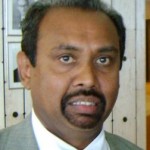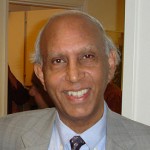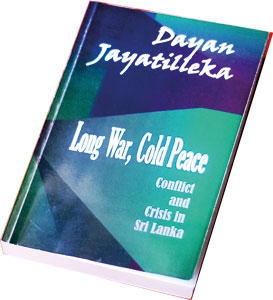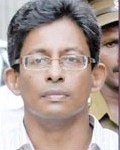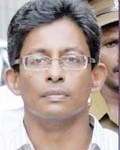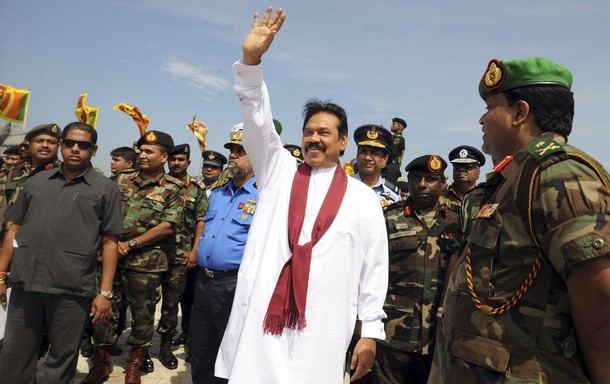–
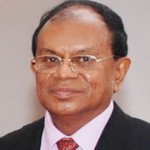
Dr. Laksiri Fernando
When I read Charles Sarvan’s first article “Para Dhemalā,” I didn’t see anything objectionable although I sensed perhaps he was not interpreting Michael Roberts’ views on the subject correctly and also I couldn’t agree with his last paragraph which paraphrased Paul Caspersz saying “if one insists on the label “Indian Tamils,” then one should also speak of “Indian Sinhalese.” The paragraph was simply inaccurate. Otherwise there was much meaning and substance to what Sarvan said about ethnic discrimination and caste ideology.
When I was growing up at Moratuwa, almost at the center of the town, I cannot recollect anybody using the term ‘para demala’ even during the cataclysmic communal riots against the Tamils in 1958. Perhaps I didn’t hear them. I had several Tamil friends at St. Sebastian’s College, where I was initially studying, but even there it was not used to my knowledge. But ‘paraya’ was often used not so much at school but in the area where I lived and it was used as a derogatory term in anger or to spite someone who is not liked by you. It also had the connotation that ‘the other’ is inferior.
But even in our school books I believe the terms ‘para desin’ and ‘parangi’ were there and our teachers explained the meanings respectively as ‘foreign’ and ‘Portuguese’ also emphasizing they are not neutral but pejorative terms. In our area, (Sinhalese) people believed that there were two classes of Tamils, those who were called ‘Jaffna Tamils’ and the others, the ‘Indian Tamils.’ Some considered the first group as more or less equal, but not at all the second. But the majority considered both as ‘alien’ and also ‘inferior.’
Having read EW Adikaram’s “A Communalist is a Psychopath” (Jativadiya Manasika Pisseki) as an early teenager, the distinction or the discrimination worried or puzzled me. My effort is not to say that I have been free from any ethnic prejudice. On the contrary, I wish to admit that as a person brought up and socialized within a particular social context, I may have certain prejudices or biases unconsciously. But in my conscious life, I try my best to be free from biases or prejudices while at the same time not rejecting my given ethnic identity.
But the reason to write this rejoinder is not the above. With all respect to Roberts, I believe that there is something extremely significant in what Sarvan has pointed out in his initial article. That is the connection between ‘ethnic conception and caste ideology.’ This is not the first time I have said this. The following is what Sarvan has said.
“The context in which the word para was used, both at boarding-school, in Colombo and elsewhere; the accompanying tone of voice and facial expression, all indicated contempt, dismissal and rejection. Para was linked to Parayā (low caste) and that sufficed to convey meaning to me.”
What he relates is a personal experience, but what is significant to me is what he says as “the accompanying tone of voice and facial expression, all indicated contempt, dismissal and rejection.”
Where does this come from? My conjecture is that it comes from the age old caste-ideology with the accompanied conceptions of ‘purity’ and ‘pollution.’ This caste-ideology manifests among the majority Sinhalese in one way and among the Tamils in another. I am not saying that both are the same in practical terms, one discriminating the other on equal terms, but the ideological roots are more or less the same while there are other root causes as well.
Have I encountered the ‘contempt, dismissal and rejection’ as a so-called Sinhalese? Yes, something closer to that at least once and seen a similar behavior another time. But if I recollect the way the Sinhalese treat the Tamils or the Muslims, then it is almost uncountable. The different experience may be due to me being a ‘Sinhalese’ and moving primarily among the Sinhalese.
Among the Sinhalese, the influencing ideology remains as a ‘superior caste’ which attempts to subjugate a perceived ‘inferior caste.’ It claims ‘purity’ as a ‘chosen people’ by combining ethnicity with religion (Sinhala Buddhism) and attempts by and large to purge the ‘pollution’ through attempted ethnic cleansing of both the Tamils and the Muslims or even the Sinhalese Christians as outcaste.
Among the Tamils, the influencing ideology remains as a ‘distinct group’ also trying to claim a similar ‘superior status’ aligning with the brethren across the Palk-Strait. It also claims ‘purity’ and attempts to purge ‘pollution’ by cleansing whoever perceived as polluting its purity.
I am not saying, the caste or ‘caste-like’ ideology is the only ideological current among the Sinhalese or the Tamils. But often it becomes dominant and distorts ideological landscape or political thinking of the country. We sometimes patronize ourselves by saying or thinking that the caste system is dead and gone in Sri Lanka. But that is not simply the case. The caste ideology is well and kicking. Those who are most communal minded are probably the ones who are most caste minded.
I was recently writing an essay on human rights and the 1978 constitution and wondered why it is so much difficult for the todays Sri Lankans to accept universal human rights. My observation after some contemplation was that because they are (perhaps unconsciously) strongly caste minded. There is a perennial difficulty for many Sri Lankans to grasp and accept the concept of equality due to caste ideology. This may possibly change with the new generations. But that is not the case yet.
The dilemma that Sri Lanka faces in this connection is a historical one, connected with the state and ethnic formation. Let me quote only one paragraph from what I wrote in 2000 (Human Rights, States and Politics: Burma, Cambodia and Sri Lanka):
“It is interesting to examine how the successive migrant communities from India, or other countries in the region, were absorbed into the society after the establishment of the Sinhalese ethnic state. Except in the case of Kshatriya or royal blood, it is evident that others were absorbed at the bottom of the caste hierarchy. At a very early stage of migration, those who came from Madhura in South India were absorbed as the service castes, who were supposed to function as artisans, craftsman, and manual laborers. The origins of several other so-called low castes in the country, e.g. fisherman and cinnamon peelers, can also be traced to the people who came from South India at a later date. What we can see here is a convergence between the ethnic divide and the caste divide.” (p. 59).
During 2002, when I was conducting some field research in the interior of the Kalutara District, I came across a caste called Demala Gaththera. Gaththera caste is one of the oppressed castes in the country, popularly believed a ‘low caste.’ The story was that when some Tamil migrants came to live in the area for some reason, during the early nineteenth century, they were called Demala Gaththera.

